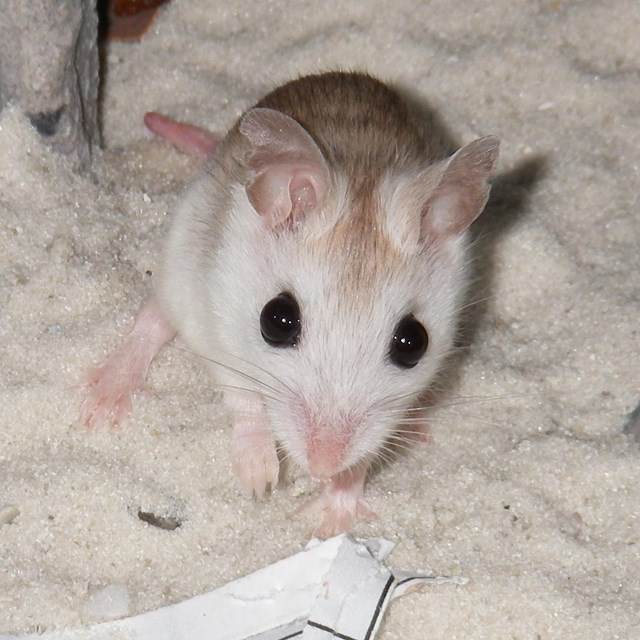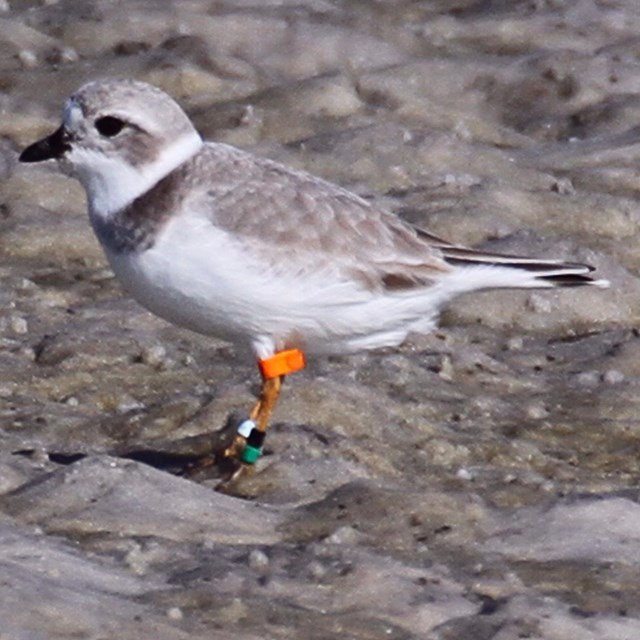
NPS Photo/Willis The beaches of Gulf Islands National Seashore are vegetated by dune communities. Coastal dunes require a perfect mixture of sand, wind, water, sand-trapping vegetation and space. Dune communities are hosts to many different animal and plant species and even act as a barrier against wind and waves, protecting inland areas from storm damage. The most abundant type of dune communities at the national seashore are called foredune communities or the first dunes above the beach. These foredunes are created by sand blowing inland from the beach, forming a line that runs adjacent to the coast. Foredunes help shelter plant life from exposure to and create pockets where less salt-tolerant floral communities can form. The plant species that make up the foredune communities have specific adaptations that help them tolerate the shifting sands and salt spray. The pioneer plants that help build foredunes are sea oats (Uniola paniculata), which have stems that trap the sand grains blown off the beach while growing upward to keep pace with sand burial. Other species that grow in foredunes include, beach elder (Iva imbricata), bitter panicum (Panicum amarum), maritime Bluestem (Schizachyrium maritimum), beach morning-glory (Ipomoea imperati) and virginia creeper (Parthenocissus quinquefolia). These plants aid in stabilizing dunes to alleviate erosion. As you move further inland from the foredune, you may notice different plants growing closer together. These dune communities behind the foredunes are known as secondary dunes which often have higher species diversity and woody species because of the lower levels of salt spray and sand movement. Typical plant species that live in secondary dunes include: yaupon holly (Ilex vomitoria), hercules Club (Aralia spinosa), wax myrtle (Myrica cerifera), red cedar (Thuja plicata), virginia creeper (Parthenocissus quinquefolia), poison ivy (Toxicodendron radicans) and wild olive (Olea oleaster). Dunes aren’t just mounds of sand next to the beach where vegetation takes root. Dune communities provide important shelter and food for animals, like the listed Perdido Key beach mouse (Peromyscus polionotus trissyllepsis). The Perdido Key beach mouse primarily feeds on sea oats, bluestem, and the occasional insect. These mice also burrow in dunes typically near a vegetative structure. These dune communities also provide habitat for the threatened piping plover (Charadrius melodus), and the endangered leatherback sea turtle (Dermochelys coriacea). Dunes protect the homes and communities of humans living near the coast, serving as a barrier between the water's edge and inland areas, taking the brunt of energy produced by storm surges. The protection dunes provide depends on how wide the beach or dune system is and the distance from developed or populated areas. Coastal dunes are highly sensitive and are under pressure due to increased sediment loss. Damage from walking over or climbing dunes can range from stomping vegetation to destabilizing dune structural integrity. No matter how minor or significant damage, it is always best to be cautious around dunes and respect the species that inhabit those areas. Damage to dune communities becomes damage to all of the species that are associated with it such as the Piping Plover, the Leatherback Sea Turtle and the Perdido Key Beach mouse. Animals in this Ecosystem
Gulf Islands ResidentsAnimals
|
Last updated: April 16, 2020



